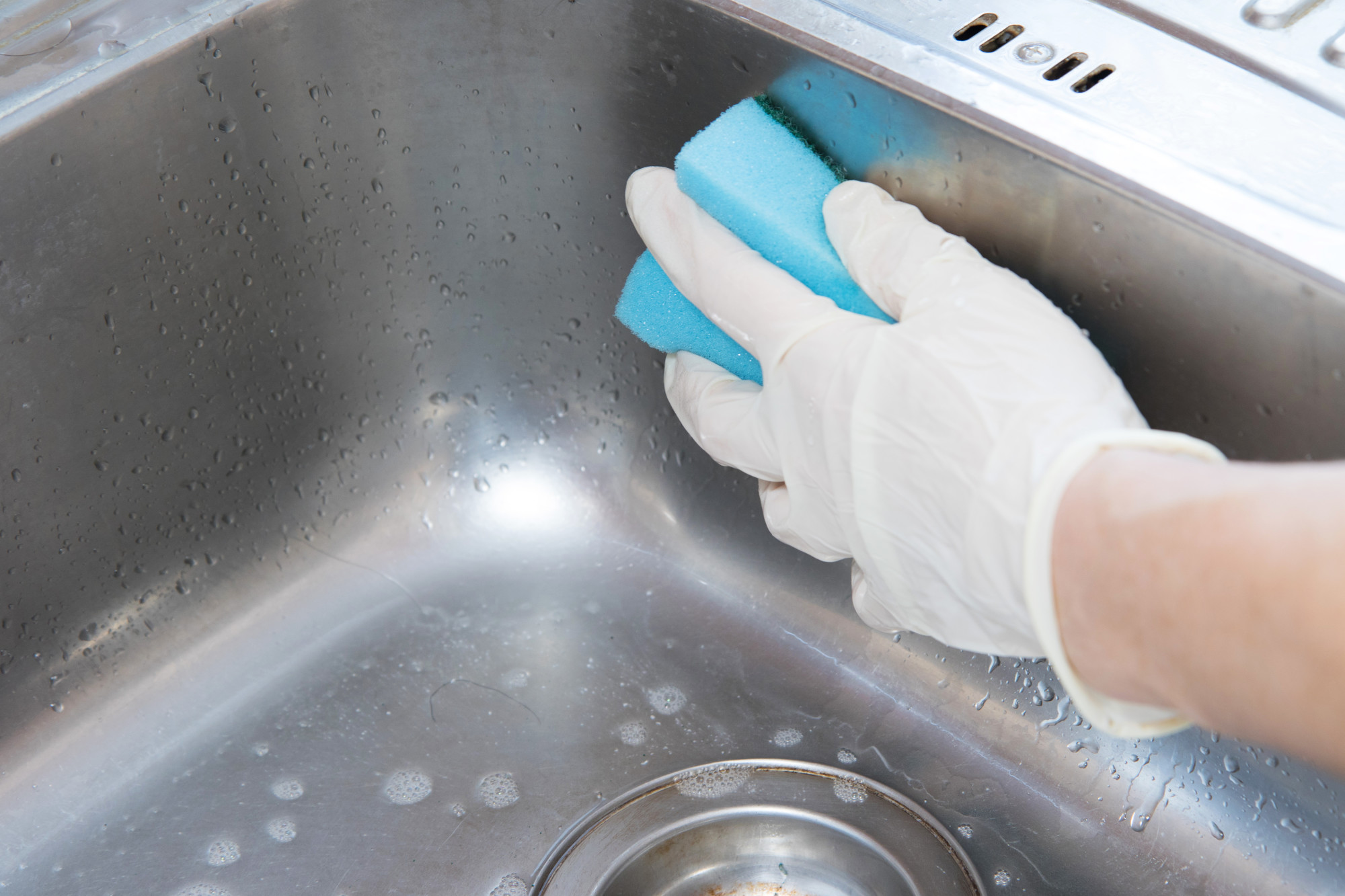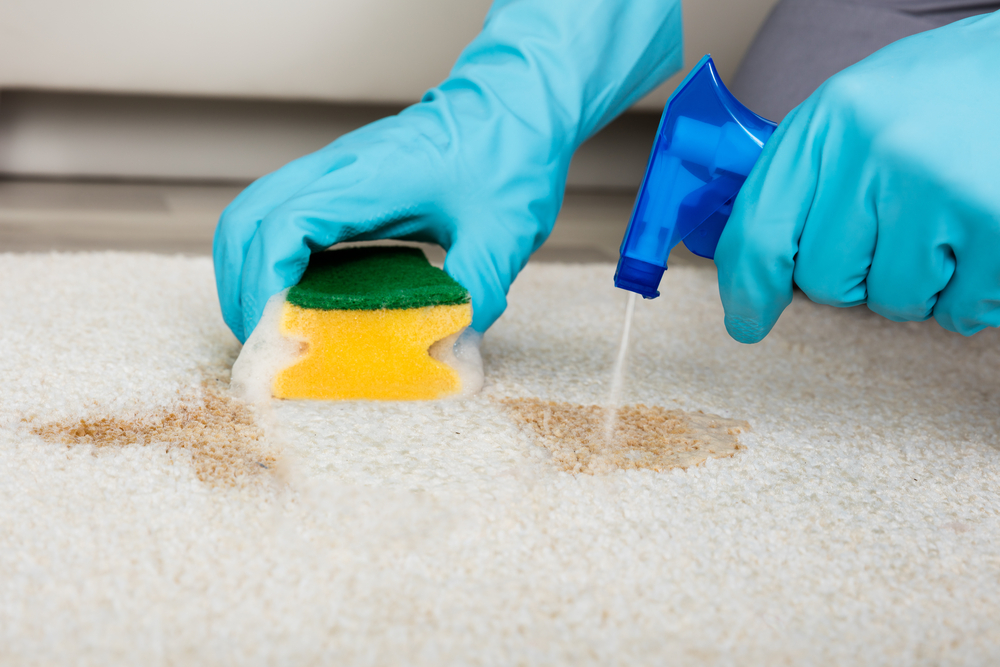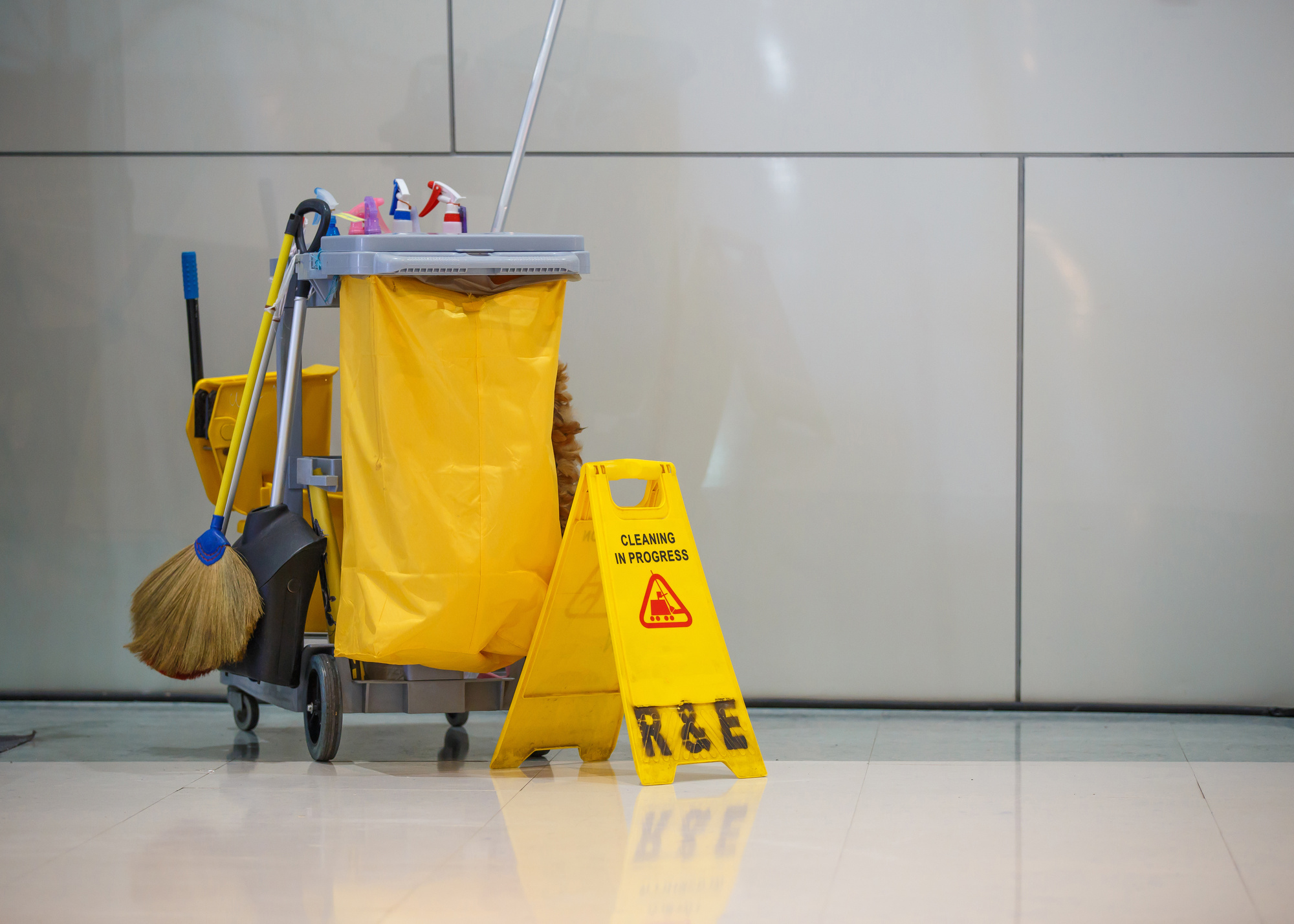Your kitchen sink may be plotting against you. While many of us would like to believe that the drains in our home are sparkling clean, the truth is often very different. Besides dish sponges and cell phones, your sinks are one of the most bacteria-ridden things in your home!
However, mold and bacteria are only a couple of common threats to your sinks. Stains can also develop, and in turn, start driving you crazy. You could hire a professional cleaning service to deal with this.
If you have a hectic schedule, this may be the best option. But first, let’s take a look at how to clean a stained sink, and find out how they get so dirty in the first place!
How to Clean a Stained Sink
Before you can truly understand how to clean a sink, you have to know how it became so filthy! But, many things help to contribute to a sink’s stains, dirt, and grime.
What Causes Sinks to Become Stained or Dirty?
To figure this out, it’s crucial to think about what we typically use sinks for.
In the kitchen, we typically use the sink to:
- Wash our hands when they become messy.
- Wash ingredients before preparation or cooking.
- Rinse off uneaten food from pots, pans, plates, and cups.
- Wash and rinse dirty dishes.
- Dispose of uneaten bits of food.
And in the bathroom, the sink is typically handy for:
- Rinsing hair from a razor while shaving.
- Washing our hands after using the toilet.
- Rinsing our toothbrush out after brushing our teeth.
- Spitting into while brushing our teeth or rinsing with mouthwash.
- Washing our face with warm water and soap.
- Rinsing colored dye from our hair.
- Accepting all forms of wastewater at any given time.
Strong hair dyes, mold growth, and hard water are the most common culprits when it comes to sink stains. But just about anything can make them dirty.
When you think about it, your sinks take quite a lot of abuse! They’re continually becoming filthier and stinkier as time passes. Without consistent, regular cleaning and disinfecting, your household sinks could be a hazard to your health.
That’s why it is vital to understand the basics of cleaning your sinks.
How to Clean a Bathroom Sink
Cleaning your bathroom sink isn’t nearly as difficult as you might think it is. You can complete the entire process in only a few minutes! It will help to gather all of your necessary items beforehand, so be sure to do that first.
Wipe and Rinse
Have you got everything you need? Great!
The first step in any sink cleaning process is to do a preliminary wipe and rinse. Grab a sponge or rag and dampen it with warm water. It doesn’t need to be hot, just ensure that it isn’t cold water!
Wipe down any loose hairs, dirt, dust, or debris around the edges of the sink. Work your way closer to the drain using increasingly smaller circular wipes. Be sure to rinse your sponge or rag with fresh water from the faucet when it becomes dirty.
When you have successfully wiped and rinsed the sink, it’s time to break out the cleaner.
Apply Cleaner
Apply or spray the cleaning agent to the inside of the sink. Depending on the exact type of product you are using, you may want to avoid contact with the metal faucet.
Once you have covered the entire sink bowl, go ahead and take a break!
Take a Break
Depending on your schedule and how stained or dirtied your sink is, you may want to sit back for a little while and let the cleaner do its work. This could mean taking a short ten-minute break or walking away for an hour.
No matter how long of a break you’re taking, inform the other members of your household to stay away from the sink! You’ll all be glad that you did.
When your break time is over, get on a pair of protective, water-proof gloves and get back in there!
Scrub, Scrub, Scrub
Using the same sponge or rag that you used to perform your wipe down, begin scrubbing your sink! The cleaner will help lift any dirt or scum from the surface of the tub. All it’s waiting for is a little old fashioned elbow grease.
Darker, deeper stains may take a little extra work to get rid of. Don’t worry. Even if you don’t seem then vanish after the first cleaning, they’re bound to begin fading away within the next few.
When you’re satisfied with your scrubbing (or your arms feel like noodles), go ahead and turn on that faucet and get to rinsing.
Rinse and Disinfect
Rinse your sponge or rag with clean, cold water. Then, go ahead and use it to help rinse the cleaning solution away. If you used bleach to clean your sink, you would need warm water and lots of it.
Otherwise, you may leave a bleach residue on surfaces. This can be dangerous, especially when pets or small children are involved.
Once the sink has been wholly rinsed, go ahead and disinfect it. The easiest way to do this is by spraying the surfaces with a disinfectant spray. You can also use vinegar, rubbing alcohol, or hot water.
How to Clean a Kitchen Sink
The process for cleaning your kitchen sink is very similar to one for cleaning your bathroom sink. However, this time you’ll need to disinfect all of the surfaces once they’re clean.
Wipe and Rinse
When you’ve gathered your supplies, put on your gloves, and prepare to wipe down your sink. Don’t ignore the faucet, sides, and underside of your sink. They get far filthier than you’d imagine!
If your cleaning tool (sponge or rag) gathers a lot of dirt, hair, or debris, wash and wring it out before continuing. Otherwise, you’re just spreading the mess around.
A quick rinse with warm or tepid water ensures that your surfaces are ready for the cleaning solution.
Apply Cleaner
Spray or spread your preferred cleaning solution on your sink. Kitchen sinks tend to be larger and slightly more complicated than bathroom sinks, so be sure to cover every visible surface.
Don’t ignore your faucet, faucet handles, or drains! They may not be stained, but they’re bound to be covered in bacteria.
You can choose to take a short break before scrubbing, especially if you’re treating set-in stains. However, the best way to tackle kitchen sink dirt is to start cleaning right away!
Start Scrubbing
Use a non-abrasive sponge or rag and a protective pair of gloves. Then, release your fury upon the grime and grit! Give all surface a good, hard scrub.
You may even want to go over all surfaces twice. It’s also a great idea to spend longer on more hardened, set-in dirt or stains. But don’t be discouraged if you meet resistance.
Multiple cleanings will lessen overall dirt and stains. It just takes time. When you’re ready to end your scrubbing, open the faucet and get some warm water flowing.
Rinse With Warm or Hot Water
Rinse your sponge or rag with warm or hot water, then wring it out. You can keep a bucket or bowl of water nearby to save water, or you can keep the faucet flowing.
Using your cleaning tool (or your sink sprayer), rinse all of the sink surfaces of the cleaning solution. Warm water will help disinfect while you go!
Disinfect Everything
Speaking of disinfecting, the most critical step in cleaning your kitchen sink is disinfecting it once it’s clean. Doing so will keep bacteria, mold, and mildew from taking hold and leaving stains.
Disinfectant sprays are a fantastic option, but you can also use a bleach solution, vinegar, or boiling water.
The Best Sink Cleaners
Whether you’re geared toward a homeopathic solution, or you’re ready to break out the hard chemicals, there’s a sink cleaner that’s perfect for you!
Baking Soda, Salt, and Vinegar
Sodium bicarbonate, better known as baking soda, is a multipurpose substance that can change your life. It can help with stomach aches, remove odors from carpets, and even unclog drains.
But, when you mix baking soda with a little salt and vinegar, you end up with a super-reactive and incredibly powerful cleaning agent!
Baking soda is slightly abrasive and is considered to be a type of salt. So, when you add table salt or sea salt to it, it’s abrasion qualities increase. This allows the mixture to scrape dirt, mold, and mildew away without harming the harder material beneath!
Vinegar is extremely acidic and can produce a chemical reaction when added to baking soda. Every elementary school volcano creator understands this basic chemistry. But you can apply it to your cleaning repertoire to make cleaning a breeze.
A baking soda, salt, and vinegar solution can help remove hard water stains if left to sit in a sink for thirty minutes to an hour. When you remove the drain plug, the foamy stuff will also unclog the sink pipes on its way down! However, this option is not the most powerful, though it may be the least toxic (and most fun to watch).
Lemon Juice
Natural acids make excellent cleaning products. Citrus juice, from limes, lemons, and grapefruits, are highly acidic. While that property might make them a terrible choice for a compost heap, it does make them an excellent choice for household cleaning.
You can buy a bottle of lemon juice at your local grocery store, or you can hand-squeeze some yourself. Pour the lemon juice into a transparent, sterilized spray bottle. Add clean water or white vinegar to the container.
You now have a great-smelling all-purpose cleaner! To use, spray and leave on any greasy, grimy surfaces. After about ten minutes, wipe those surfaces with a clean, damp cloth.
Lemon juice can become quite sticky if left to its own purposes, so it’s essential to follow through with the last step!
Enzyme-Based Cleaners
Anyone with pets is probably already familiar with enzymatic cleaners. These helpful sprays remove stains on a macromolecular level. They can also help reduce or remove foul smells.
For these reasons, homeowners often choose to invest a reliable enzymatic cleaner for carpet stains and soils. Enzyme-based cleaners can also reduce ceramic staining and help with general household cleaning tasks. However, they can be pricey, so it may be better to reserve enzymatic cleaners for stain-removing only.
Lye-Based Cleaners
Cleaners that contain lye are far trickier to use than baking soda, lemon juice, or enzymatic cleaners. That’s because lye is a dangerous substance that can cause serious health problems.
Lye, also known as caustic soda or sodium hydroxide, should never be inhaled, consumed, or touched with bare skin. If you decided to use a lye-based cleaner in your home, you need to wear thick rubber or vinyl gloves to protect your hands. You also need to ensure that your chemicals are properly stored, labeled, and out-of-reach.
Drain cleaners, detergents, and soaps all contain some amount of lye. It’s an excellent choice for kitchen sinks because caustic soda turns grease and fat into a water-soluble cleanser. Imagine your oil-clogged kitchen sink turning itself into a soapy paradise!
However, because lye can be deadly in the wrong hands, you must be extra-cautious when using it. The same can be said for bleach.
Bleach
While bleach may still be a standard household cleaner, many people are deciding to abandon it entirely due to its high toxicity. Bleach is an active chemical that can be deadly when mixed with ammonia or consumed.
A popular myth states that bleach evaporates over time and does not leave a harmful residue. This is untrue. So, if you do decide to use bleach to rid your sinks of set-in stains, dilute it with water before beginning.
Also, be sure to protect your eyes, mouth, and skin from contact with the bleach solution. In addition, you will need to use more water to ensure that your surfaces are residue-free. Consequently, using bleach to clean your home can take longer, be more harmful to your health, and raise your water bill.
However, in terms of a whitening agent, you can’t do much better than bleach and hydrogen peroxide.
Don’t Be Afraid of a Little Elbow Grease!
Now that you know how to clean a stained sink, you can tackle the primary sources of mold and bacteria in your home. You also have a fighting chance at removing or preventing sink stains. Don’t be afraid to go hard and whip out a little elbow grease.
You can even consider it multitasking — cleaning is excellent exercise! But if you don’t have the time to properly clean, a deluxe cleaning service may be the better option for you and your family.
You can get an instant online quote for cleaning services right now, and answers and assistance are only a phone call away!






